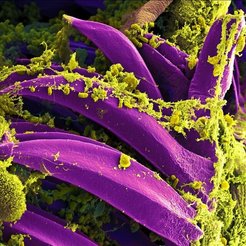Phylogenetics and migration dynamics of Yersinia pestis in Madagascar

The gram-negative bacterium Yersinia pestis is the causal agent of the plague, a zoonotic disease transmitted by hematophagous vectors (mainly fleas). Despite being primarily a rodent disease, plague has infected humans for thousands of years, and has been responsible for millions of deaths and at least three severe pandemics throughout human history. Currently the most affected country is Madagascar, an island located in the coast of East Africa, with about 400 cases reported annually since 2010. In this country, there are two main infection foci: one located in the Central Highlands, a mountainous region with reports of human cases almost every year, and the other in the coastal city of Mahajanga.
Plague was introduced in Mahajanga in 1902 and caused outbreaks in 1907 and during the 1920s. After 1928, no human cases were recorded for over six decades until the disease reappeared in August 1991. It continued to have a strong presence in the city for the rest of the decade with over 1700 suspected cases. It is believed that the Mahajanga plague focus likely represents a true reintroduction of plague, very likely from the Central Highlands. For this project, we are employing Bayesian phylogenetic methods supported by the platform BEAST2 to estimate the migration rate and the number of migration events of Yersinia pestis between the two foci and determine if the outbreaks in Mahajanga during the 1990s originated from a single or multiple introductions.
